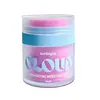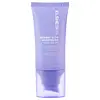What's inside
What's inside
 Key Ingredients
Key Ingredients

 Benefits
Benefits

 Concerns
Concerns

 Ingredients Side-by-side
Ingredients Side-by-side

Propylene Glycol
HumectantCarbomer
Emulsion StabilisingPhenoxyethanol
PreservativeSaccharide Isomerate
HumectantGlycerin
HumectantMyrothamnus Flabellifolia Leaf/Stem Extract
HumectantCaprylic/Capric Triglyceride
MaskingTriethanolamine
BufferingSodium Hyaluronate
HumectantChlorphenesin
AntimicrobialCetyl-Pg Hydroxyethyl Palmitamide
Skin ConditioningHydrogenated Lecithin
EmulsifyingCholesterol
EmollientCeramide NP
Skin ConditioningPalmitoyl Tripeptide-5
Skin ConditioningCI 42090
Cosmetic ColorantCI 14720
Cosmetic ColorantPropylene Glycol, Carbomer, Phenoxyethanol, Saccharide Isomerate, Glycerin, Myrothamnus Flabellifolia Leaf/Stem Extract, Caprylic/Capric Triglyceride, Triethanolamine, Sodium Hyaluronate, Chlorphenesin, Cetyl-Pg Hydroxyethyl Palmitamide, Hydrogenated Lecithin, Cholesterol, Ceramide NP, Palmitoyl Tripeptide-5, CI 42090, CI 14720
Water
Skin ConditioningPotassium Methoxysalicylate
BleachingNiacinamide 5%
SmoothingTranexamic Acid 3%
AstringentCyclopentasiloxane
EmollientUndecylenoyl Phenylalanine 2%
Skin ConditioningSqualane
EmollientAlpha-Arbutin 2%
AntioxidantSaccharide Isomerate
HumectantGlycerin
HumectantPropylene Glycol
HumectantIsohexadecane
EmollientGlutathione 1%
Dimethicone/Vinyl Dimethicone Crosspolymer
Skin ConditioningArbutin
AntioxidantVitis Vinifera Seed Extract
AntimicrobialLecithin
EmollientLinoleic Acid
CleansingTocopheryl Acetate
AntioxidantSodium Ascorbyl Phosphate
AntioxidantPEG-40 Hydrogenated Castor Oil
EmulsifyingLinolenic Acid
CleansingPEG-10 Dimethicone Crosspolymer
StabilisingCentella Asiatica Leaf Extract
Skin ConditioningButylene Glycol
HumectantHamamelis Virginiana Leaf Extract
Skin ConditioningCitric Acid
BufferingSodium Sulfite
PreservativeAcetyl Tyrosine
Skin ConditioningSaxifraga Sarmentosa Extract
Skin ConditioningPaeonia Suffruticosa Root Extract
Skin ProtectingAminopropyl Ascorbyl Phosphate
AntioxidantScutellaria Baicalensis Root Extract
AstringentPisum Sativum Seed Extract
Skin ConditioningChenopodium Quinoa Seed Extract
Skin ConditioningBenzyl Alcohol
PerfumingPotassium Sorbate
PreservativeSodium Benzoate
MaskingPentylene Glycol
Skin ConditioningPotassium Thiocyanate
StabilisingLactoferrin
Skin ConditioningLactoperoxidase
StabilisingGlucose Oxidase
StabilisingGlucose Pentaacetate
Emulsion StabilisingPotassium Phosphate
BufferingDisodium Phosphate
BufferingUbiquinone
AntioxidantSodium Palmitoyl Proline
Skin ConditioningNymphaea Alba Flower Extract
Skin ConditioningDipropylene Glycol
HumectantPhenoxyethanol
PreservativeEthylhexylglycerin
Skin ConditioningVaccinium Myrtillus Fruit Extract
Skin ConditioningTerminalia Ferdinandiana Fruit Extract
Antioxidant1,2-Hexanediol
Skin ConditioningGlycyrrhiza Glabra Root Extract
BleachingCeteareth-25
CleansingCetyl Alcohol
EmollientBehenic Acid
CleansingCholesterol
EmollientCeramide NP
Skin ConditioningCeramide Ns
Skin ConditioningCeramide Eos
Skin ConditioningCeramide EOP
Skin ConditioningCeramide AP
Skin ConditioningCaprooyl Phytosphingosine
Skin ConditioningCaprooyl Sphingosine
Skin ConditioningAscorbyl Palmitate
AntioxidantTocopherol
AntioxidantGlyceryl Stearate
EmollientGlyceryl Oleate
EmollientArisaema Amurense Extract
Skin ConditioningDecyl Glucoside
CleansingKojic Acid
AntioxidantHexapeptide-2
BleachingCarbomer
Emulsion StabilisingBorago Officinalis Seed Oil
EmollientArginine
Masking4-Butylresorcinol
AntioxidantDextrin
AbsorbentTetrahydrodiferuloylmethane
AntioxidantSodium Hyaluronate Crosspolymer
HumectantSodium Hyaluronate
HumectantSodium Acetylated Hyaluronate
HumectantHydrolyzed Sodium Hyaluronate
Skin ConditioningDisodium EDTA
Allantoin
Skin ConditioningAminomethyl Propanol
BufferingDimethylmethoxy Chromanyl Palmitate
Skin ConditioningAcetyl Glucosamine
Skin ConditioningHyaluronic Acid
HumectantDipeptide-4
Skin ConditioningRetinyl Palmitate
Skin ConditioningWater, Potassium Methoxysalicylate, Niacinamide 5%, Tranexamic Acid 3%, Cyclopentasiloxane, Undecylenoyl Phenylalanine 2%, Squalane, Alpha-Arbutin 2%, Saccharide Isomerate, Glycerin, Propylene Glycol, Isohexadecane, Glutathione 1%, Dimethicone/Vinyl Dimethicone Crosspolymer, Arbutin, Vitis Vinifera Seed Extract, Lecithin, Linoleic Acid, Tocopheryl Acetate, Sodium Ascorbyl Phosphate, PEG-40 Hydrogenated Castor Oil, Linolenic Acid, PEG-10 Dimethicone Crosspolymer, Centella Asiatica Leaf Extract, Butylene Glycol, Hamamelis Virginiana Leaf Extract, Citric Acid, Sodium Sulfite, Acetyl Tyrosine, Saxifraga Sarmentosa Extract, Paeonia Suffruticosa Root Extract, Aminopropyl Ascorbyl Phosphate, Scutellaria Baicalensis Root Extract, Pisum Sativum Seed Extract, Chenopodium Quinoa Seed Extract, Benzyl Alcohol, Potassium Sorbate, Sodium Benzoate, Pentylene Glycol, Potassium Thiocyanate, Lactoferrin, Lactoperoxidase, Glucose Oxidase, Glucose Pentaacetate, Potassium Phosphate, Disodium Phosphate, Ubiquinone, Sodium Palmitoyl Proline, Nymphaea Alba Flower Extract, Dipropylene Glycol, Phenoxyethanol, Ethylhexylglycerin, Vaccinium Myrtillus Fruit Extract, Terminalia Ferdinandiana Fruit Extract, 1,2-Hexanediol, Glycyrrhiza Glabra Root Extract, Ceteareth-25, Cetyl Alcohol, Behenic Acid, Cholesterol, Ceramide NP, Ceramide Ns, Ceramide Eos, Ceramide EOP, Ceramide AP, Caprooyl Phytosphingosine, Caprooyl Sphingosine, Ascorbyl Palmitate, Tocopherol, Glyceryl Stearate, Glyceryl Oleate, Arisaema Amurense Extract, Decyl Glucoside, Kojic Acid, Hexapeptide-2, Carbomer, Borago Officinalis Seed Oil, Arginine, 4-Butylresorcinol, Dextrin, Tetrahydrodiferuloylmethane, Sodium Hyaluronate Crosspolymer, Sodium Hyaluronate, Sodium Acetylated Hyaluronate, Hydrolyzed Sodium Hyaluronate, Disodium EDTA, Allantoin, Aminomethyl Propanol, Dimethylmethoxy Chromanyl Palmitate, Acetyl Glucosamine, Hyaluronic Acid, Dipeptide-4, Retinyl Palmitate
Ingredients Explained
These ingredients are found in both products.
Ingredients higher up in an ingredient list are typically present in a larger amount.
Carbomer is a polymer of acrylic acid. Its main role is to create a gel consistency.
A high amount of carbomer can cause pilling or balling up of products. Don't worry, most products contain 1% or less of carbomer.
Ceramide NP is a type of ceramide and formally known as ceramide 3.
Ceramides are intercellular lipids naturally found in our skin that bonds dead skin cells together to create a barrier. They are known for their ability to hold water and thus are a great ingredient for dry skin.
Ceramides are an important building block for our skin barrier. A stronger barrier helps the skin look more firm and hydrated. By bolstering the skin ceramides act as a barrier against irritating ingredients. This can help with inflammation as well.
If you would like to eat ceramides, sweet potatoes contain a small amount.
Read more about other common types of ceramides here:
Ceramide AP
Ceramide EOP
Cholesterol is a class of organic molecules called lipids. It helps hydrate your skin and is essential to having a healthy skin barrier.
Our skin naturally contains cholesterol in the outermost layer. Besides cholesterol, it also contains ceramides and fatty acids. Cholesterol makes up about 1/4 of your skin's outer layer and barrier. Your skin barrier is responsible for keeping allergens and microbes out. Having a healthy skin barrier is also responsible for keeping your skin firm and plump.
Our bodies use cholestrol to create vitamin D, steroid hormones, and more.
Learn more about CholesterolGlycerin is already naturally found in your skin. It helps moisturize and protect your skin.
A study from 2016 found glycerin to be more effective as a humectant than AHAs and hyaluronic acid.
As a humectant, it helps the skin stay hydrated by pulling moisture to your skin. The low molecular weight of glycerin allows it to pull moisture into the deeper layers of your skin.
Hydrated skin improves your skin barrier; Your skin barrier helps protect against irritants and bacteria.
Glycerin has also been found to have antimicrobial and antiviral properties. Due to these properties, glycerin is often used in wound and burn treatments.
In cosmetics, glycerin is usually derived from plants such as soybean or palm. However, it can also be sourced from animals, such as tallow or animal fat.
This ingredient is organic, colorless, odorless, and non-toxic.
Glycerin is the name for this ingredient in American English. British English uses Glycerol/Glycerine.
Learn more about GlycerinPhenoxyethanol is a preservative that has germicide, antimicrobial, and aromatic properties. Studies show that phenoxyethanol can prevent microbial growth. By itself, it has a scent that is similar to that of a rose.
It's often used in formulations along with Caprylyl Glycol to preserve the shelf life of products.
Propylene Glycol is an odorless, colorless liquid. As a humectant, it helps skin retain moisture. It also aids in delivering active ingredients.
Another role of this ingredient is preventing a product from melting or freezing. Propylene glycol also adds antimicrobrial properties to a product, elongating product lifespan.
This ingredient is considered an organic alcohol and commonly added into both cosmetics and foods.
Those with sensitive skin or conditions may develop a rash when using this ingredient.
Learn more about Propylene GlycolSaccharide Isomerate comes from sugars found in corn. It is a skin hydrator.
The structure of this ingredient can be altered to be more similar to the carbohydrates found in our skin. This ability to mimic our skin gives it hydrating properties.
Specifically, saccharide Isomerate is a humectant. Humectants draw moisture from the air to our skin.
Research shows Saccharide Isomerate to be an effective moisturizer.
Learn more about Saccharide IsomerateSodium Hyaluronate is hyaluronic acid's salt form. It is commonly derived from the sodium salt of hyaluronic acid.
Like hyaluronic acid, it is great at holding water and acts as a humectant. This makes it a great skin hydrating ingredient.
Sodium Hyaluronate is naturally occurring in our bodies and is mostly found in eye fluid and joints.
These are some other common types of Hyaluronic Acid:
Learn more about Sodium Hyaluronate